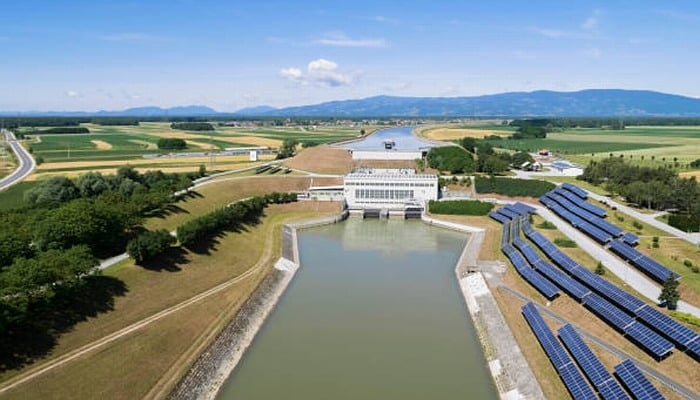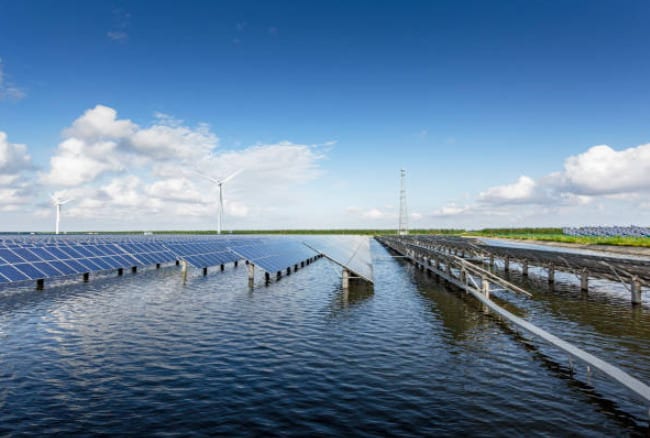How Do Solar Energy Inputs Lead to Hydroelectric Energy Generation?

The transition from solar energy to hydroelectric power is a fascinating journey that underscores the interconnectedness of natural processes and renewable energy technologies.
At first glance, solar energy and hydroelectric power might seem like distinct entities, each harnessing different elements of nature. However, a closer look reveals a nuanced interplay where solar energy inputs play a pivotal role in facilitating hydroelectric energy generation. This article delves into the mechanisms through how do solar energy inputs lead to hydroelectric energy generation, illustrating the synergy between these renewable resources.
The Basics of Solar and Hydroelectric Energy
Solar energy, derived from the Sun’s rays, is a vast, inexhaustible source of power that sustains life on Earth and drives the planet’s climate and weather systems. It is primarily captured through photovoltaic cells or solar thermal systems to generate electricity or heat. On the other hand, hydroelectric energy harnesses the kinetic energy of moving water, typically by converting the potential energy stored in water reservoirs or rivers into electricity through turbines and generators.
The Solar-Hydro Connection
The link between solar energy and hydroelectric power generation is primarily mediated through the water cycle, a solar-powered process that recycles water throughout the Earth’s atmosphere, land, and oceans. Solar radiation heats the Earth’s surface, causing water to evaporate from soils, plants, and bodies of water. This water vapor eventually cools and condenses into clouds, leading to precipitation in the form of rain or snow, which replenishes rivers, lakes, and reservoirs—the very sources of hydroelectric power.
Evaporation and Precipitation: The Driving Forces
Evaporation and precipitation are key components of the water cycle influenced by solar energy. Higher solar input increases evaporation rates, subsequently affecting the amount and distribution of precipitation. This precipitation is crucial for maintaining the water levels in reservoirs behind dams, where much of the world’s hydroelectric power is generated. In essence, solar energy indirectly fuels hydroelectric power by ensuring a continuous supply of water.
Seasonal and Geographic Variations
The impact of solar energy on hydroelectric generation is subject to seasonal and geographic variations. Regions closer to the equator receive more direct sunlight year-round, potentially leading to higher evaporation and, consequently, more consistent rainfall patterns. These conditions can facilitate more stable hydroelectric power generation. Conversely, areas with distinct wet and dry seasons or those prone to long periods of drought may experience significant fluctuations in hydroelectric power output.
Climate Change Considerations
As global temperatures rise due to climate change, the hydrological cycle intensifies, leading to changes in precipitation patterns and water availability. These changes can have profound effects on hydroelectric power generation. On one hand, increased rainfall in certain regions may boost hydroelectric capacity. On the other, extreme weather events, such as prolonged droughts or excessive flooding, could challenge the reliability and efficiency of hydroelectric systems.
Enhancing Synergy Through Integrated Approaches
To optimize renewable energy generation, some regions are exploring integrated solar-hydro plants that combine photovoltaic systems with hydroelectric facilities. By co-locating solar panels with hydroelectric reservoirs, these hybrid systems can maximize land use and increase energy output, leveraging solar power to complement hydroelectric generation during periods of low water availability.
Tech advancements further expanding the direct relationship between solar and hydro
In addition to solar energy’s indirect role in hydroelectric power generation through the water cycle, advancements in technology are expanding the direct utilization of solar power to enhance hydroelectric systems.
Advanced Pumped Hydro Storage Systems
One innovative approach involves coupling solar photovoltaic (PV) arrays with pumped hydro storage systems. Pumped hydro storage is a well-established method of storing energy by pumping water uphill during times of low demand and releasing it downhill to generate electricity when demand is high. By integrating solar PV arrays into these systems, excess solar energy can be used to pump water uphill, effectively storing solar energy for later use. This hybrid approach increases the flexibility and reliability of renewable energy systems by providing a dispatchable source of power.
Floating Solar Panels on Reservoirs
Another emerging strategy is the deployment of floating solar panels on hydroelectric reservoirs. These floating solar farms not only generate electricity from sunlight but also offer additional benefits. By covering the water surface, they reduce evaporation rates, mitigate algae growth, and improve water quality, thereby enhancing the efficiency and environmental sustainability of hydroelectric operations. Moreover, the synergy between solar and hydroelectric power allows for optimized land use and infrastructure sharing, maximizing the overall energy output from a given area.
Smart Grid Integration and Energy Management
Advancements in smart grid technology enable seamless integration and coordination between solar PV systems, hydroelectric plants, and other renewable energy sources. By leveraging real-time data and predictive analytics, energy management systems can optimize the use of solar and hydroelectric resources, ensuring a reliable and resilient power supply. Additionally, demand response programs and grid-scale energy storage solutions further enhance grid stability and efficiency, enabling a smooth transition to a renewable energy-based future.

Solar and hydroelectric power plants working together to make renewables reliable, image source: Unsplash
Collaborative Research and Development
Collaborative research and development efforts play a crucial role in driving innovation and accelerating the deployment of integrated solar-hydro solutions. Public-private partnerships, academic collaborations, and industry initiatives foster knowledge exchange, technology transfer, and best practices sharing. By pooling resources and expertise, stakeholders can overcome technical barriers, optimize system performance, and address regulatory and policy challenges, paving the way for widespread adoption of these sustainable energy solutions.
A Synergistic Future
The integration of solar energy inputs with hydroelectric energy generation represents a synergistic approach to maximizing renewable energy resources. From harnessing solar radiation to drive the water cycle and replenish hydroelectric reservoirs to directly coupling solar PV arrays with pumped hydro storage systems and floating solar panels on reservoirs, these integrated solutions offer a pathway to a cleaner, more resilient energy future.

Combining solar with hydro creates a reliable source of clean power, image source: Unsplash
By leveraging the complementary strengths of solar and hydro power and embracing technological innovation and collaboration, we can accelerate the transition to a sustainable energy ecosystem while mitigating the impacts of climate change and ensuring energy security for future generations.
Conclusion
The journey from solar energy inputs to hydroelectric energy generation is a testament to the elegant efficiency of natural cycles harnessed for renewable energy. Understanding and leveraging the intricate relationship between solar radiation and the water cycle is crucial for optimizing hydroelectric power generation and ensuring a sustainable energy future.
As we continue to face the challenges of climate change, the synergy between solar and hydroelectric energy highlights the importance of integrated approaches to renewable energy development, emphasizing the need for a harmonious balance with nature’s rhythms.



